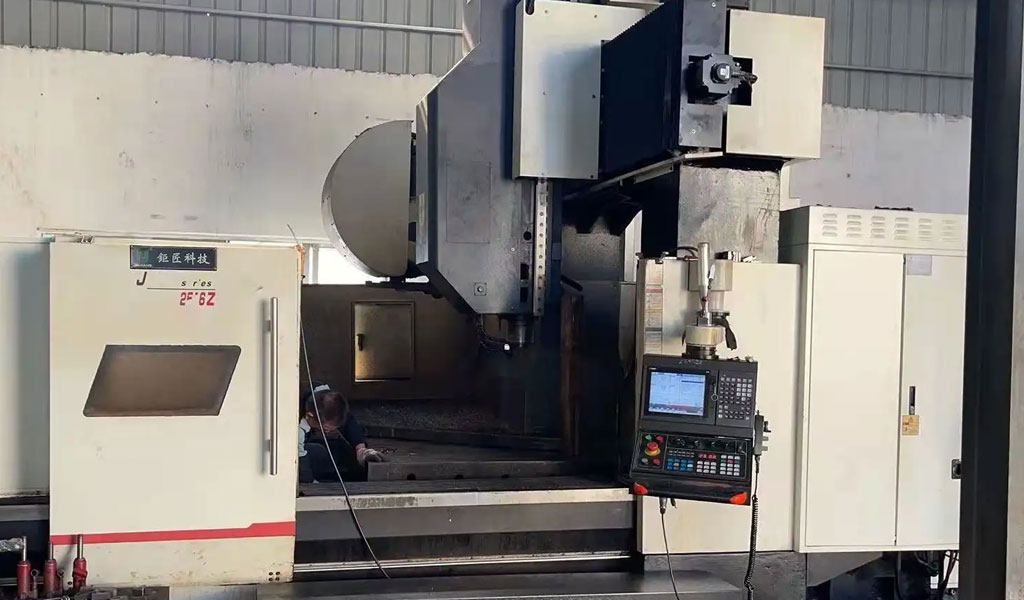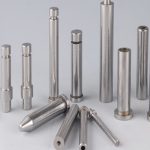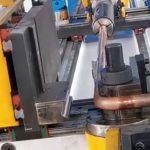With the rapid development of manufacturing industry, CNC machining has become an indispensable part. 3+2 axis CNC machining and 5 axis CNC machining are the two most commonly used machining methods. This article will introduce the principles, advantages and disadvantages, and the differences in application fields of the two in detail, and will give you a comprehensive understanding of these two CNC machining processes.
The Define Of 3+2 Axis Machining
What is 3+2 axis cnc machining?3+2-axis machining refers to the processing of three-dimensional contours through the coordinated movement of two rotational axes (A and B axes) on the basis of three linear motion axes (X, Y, and Z axes). In the specific processing process, while the tool moves on the three linear axes of X, Y, and Z, it can realize the processing of various complex contours through the rotary motion of the two rotary axes of A and B.
The advantage of 3+2-axis machining is that through the cooperation of two rotating axes, high-precision and high-efficiency machining of complex contours can be achieved while keeping the length and direction of the tool unchanged. At the same time, since the cost of 3+2-axis processing equipment is lower than that of five-axis processing equipment, it has great advantages in practical applications.
The Principles Of 3+2 Axis And 5 Axis CNC Machining

Advantages of 3+2 axis CNC machining
- a.3+2 axis CNC machining, also known as positioning five-axis CNC machining, is a method in which the cutting tool is fixed at an inclined position, and then processed by the feed axes X, Y, and Z.
- b. High precision: By precisely controlling the angle and position of the tool, more precise cutting can be achieved and the quality of the workpiece can be improved.
- c. Strong adaptability: 3+2 axis CNC machining can handle various complex shapes and contours, effectively improving the adaptability and flexibility of machining.
- d. Reduce labor intensity: 3+2 axis CNC machining with automatic control can reduce manual operation and labor intensity.
- e. Reduce scrap rate: By precisely controlling the angle and position of the cutter, the generation of scrap can be reduced and the cost can be reduced.
Disadvantages of 3+2 axis CNC machining:
- a. High equipment cost: 3+2 axis CNC machining equipment has high requirements on technology and precision, so the equipment cost is relatively high.
- b. Higher requirements for operators: Operators need to have a certain level of technology and experience in order to be proficient in this processing method.
Advantages of 5-axis CNC machining
- a. More efficient: 5-axis CNC machining can achieve higher machining efficiency when dealing with complex three-dimensional contours.
- b. More flexible: By adding two rotation axes, it can better handle workpieces of various complex shapes and contours.
- c. Higher precision: 5-axis CNC machining can control the angle and position of the tool more precisely, thereby improving the quality of the workpiece.
- d. More space-saving: 5-axis CNC machining can complete cutting at multiple angles on one device, saving space.
Disadvantages of 5 axis CNC machining
- High equipment cost: 5-axis CNC machining equipment has high technical and precision requirements, so the equipment cost is relatively high.
- Higher requirements for operators: Operators need to have a higher technical level and experience in order to be proficient in this processing method.
- Difficulty in maintenance: Due to the complexity and high precision requirements of 5-axis CNC machining equipment, maintenance of the equipment is difficult and requires professionals to maintain and repair.
- Long processing time: When dealing with complex three-dimensional contours, 5-axis CNC machining may require long processing time and reduce production efficiency.
- High equipment space requirements: Since the 5-axis CNC machining equipment needs to add two rotation axes, more space is required to accommodate the equipment.
Both 3+2-axis machining and 5-axis machining can process various materials, such as aluminum(as cnc machining aluminum 6061 etc.,)), titanium, stainless steel, copper, etc.
Comparison Table Of 3+2 Axis And 5 Axis CNC Machining
| peculiarity | 3+2 axis machining | 5-axis machining |
|---|---|---|
| Processing method | Triaxial machining, oriented by two rotating axes | Five-axis machining, oriented through five axes |
| Applicable processing objects | – Complex contours of flat surfaces | – Complex parts with three-dimensional contours |
| Tool direction control | – The tool direction remains unchanged | – The tool direction is variable during machining |
| Processing efficiency | -Slower, limited by tool length and direction changes | -Fast, can perform multiple surface processing at the same time |
| Machining accuracy | -Limited by tool length and multiple clamping | -Higher to reduce repetitive knife alignment and overcut problems |
| Applicable scenarios | – Simple parts or complex parts that require multiple clamping | -Complex parts that require high-precision and efficient machining scenarios |
| Equipment costs | -Low, can be modified with ordinary three-axis machining equipment | -High, equipment with high precision and high efficiency is required |
| Difficulty of operation | -Low and can be operated by a normal operator | -Taller, requires a professional operator to operate |
| Difficulty of maintenance | -Low for routine maintenance | -High, requires professional technicians to carry out maintenance |
It should be noted that this comparison table only provides general differences and characteristics, and it is also necessary to choose the appropriate processing method according to the specific processing needs and costs in practical applications.
Link to this article:3+2 Axis CNC Machining vs 5 Axis CNC Machining
Reprint Statement: If there are no special instructions, all articles on this site are original. Please indicate the source for reprinting:Alloy Wiki,thanks!^^






